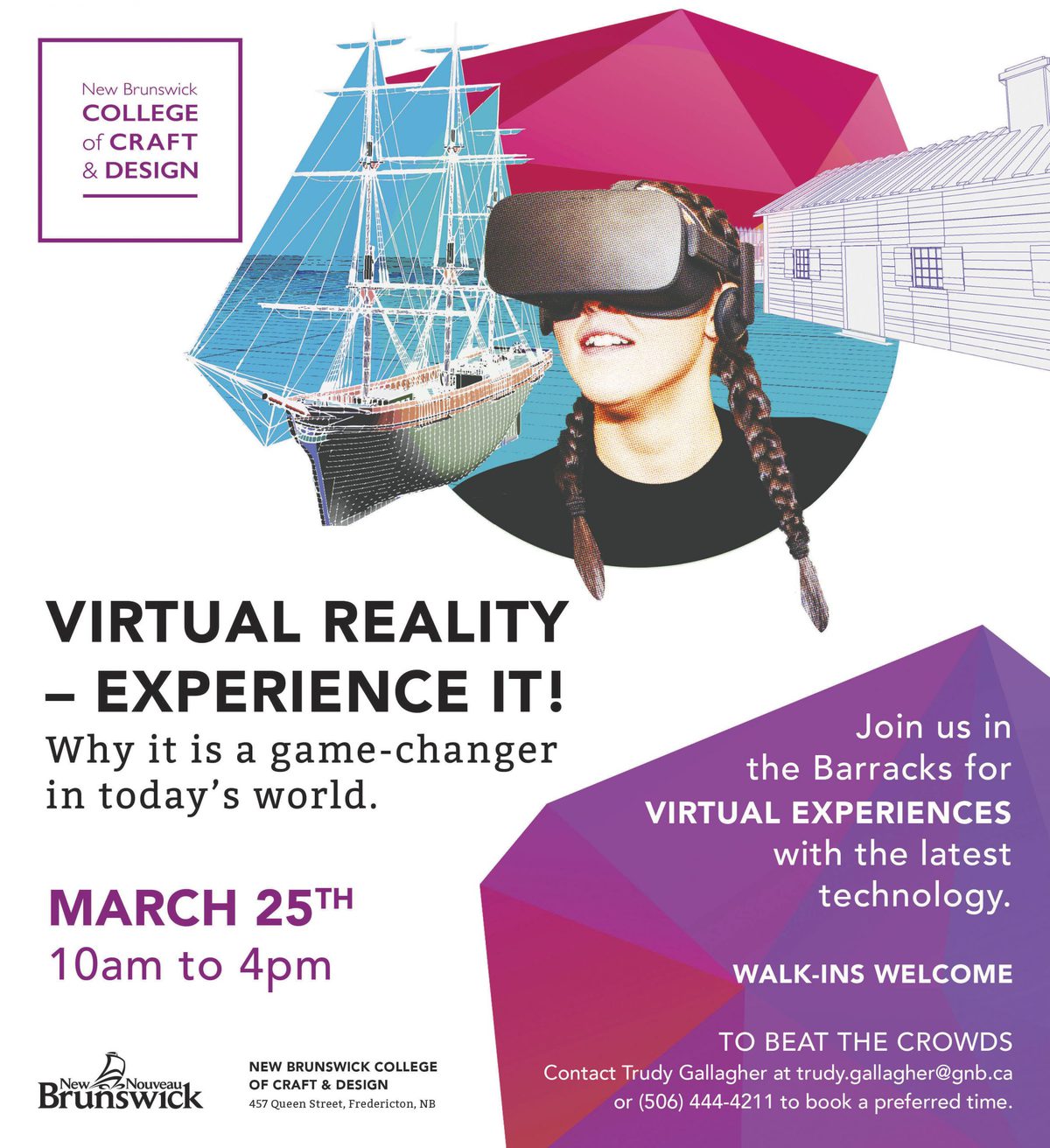Imagine you are standing in front of a patient on the operating table. You hear the beep of the heart monitor. Now imagine cutting into the patient’s chest. Suddenly, you can see their beating heart, even reach down and touch it…
Of course, you can’t actually do this – or can you? “We are living at the tip of an explosion of Virtual Reality,” says Alan Edwards, Coordinating Instructor for the Digital Media program at the New Brunswick College of Craft and Design (NBCCD).
Virtual Reality (VR) is now used for many professional training simulations. You can learn to be a mechanic or test out a new career. Elevator technicians can have repair instructions appear right before their eyes. Designers can use VR to show a client what their home or office will look like and even what the view will be like, all before the building has been constructed.
Need to book a meeting with team members from around the world? No problem. Plug in and you can all be in same conference room. Working from home could become a lot more sociable, as employees will soon be able to connect virtually for those water cooler moments.
VR is used to relax patients with severe pain, and to desensitize people to their phobias. This technology allows the bedridden to travel the world virtually. In Europe and Asia, there are Virtual Reality arcades and coffee houses.
Do you remember the Star Trek holodeck? There are now warehouse facilities where people can wander freely in a virtual environment. Backpack computers are making this possible, but wireless VR is coming soon. The experience will be deepened not only by the loss of our wires, but by the development of better haptic (touch) and olfactory (smell) systems.
More of our senses will be engaged. Not only will we be surrounded by visuals, but we will feel the vibrations of cannon fire and we will smell the gunpowder. It may sound like science fiction, but this is only the first generation of Virtual Reality. “In ten years,” Alan says, “people will look back and laugh. We are just starting to learn how to use this.”
The advances are rapid, and the programs used to create VR environments are constantly being improved. Having the ability to respond quickly to these changes is one of the key features of the two year Digital Media Diploma at NBCCD.
The current program is splitting into three specialized streams. Students will have the choice of 3D Animation/Virtual Reality, Web and Mobile Application Development, and Audio/Video Production. In their first year, students will take courses from all three subject areas, but in the second year, each student will decide which specialty stream they will pursue. By far the most important asset to a Digital Media student is a strong imagination, a dedicated work ethic, and a willingness to keep learning beyond their classroom assignments.
What do NBCCD Digital Media students have to look forward to? There are endless job possibilities. Students could become game designers, but they could also build simulations and prototypes for countless industries. VR will be used by teachers, architects, medical professionals, and people at home.
While this technology is cutting-edge, the need to connect is as old as it gets. Not only is it a fun new way to play games, Virtual Reality is a powerful tool for breaking down barriers. It will enable us to work with people a world away and to create more sustainably by testing a design before we build. The NBCCD Digital Media Program puts the students at the helm of these great advancements.
-Trudy Gallagher, Marketing & Education Consultant, New Brunswick College of Craft & Design

